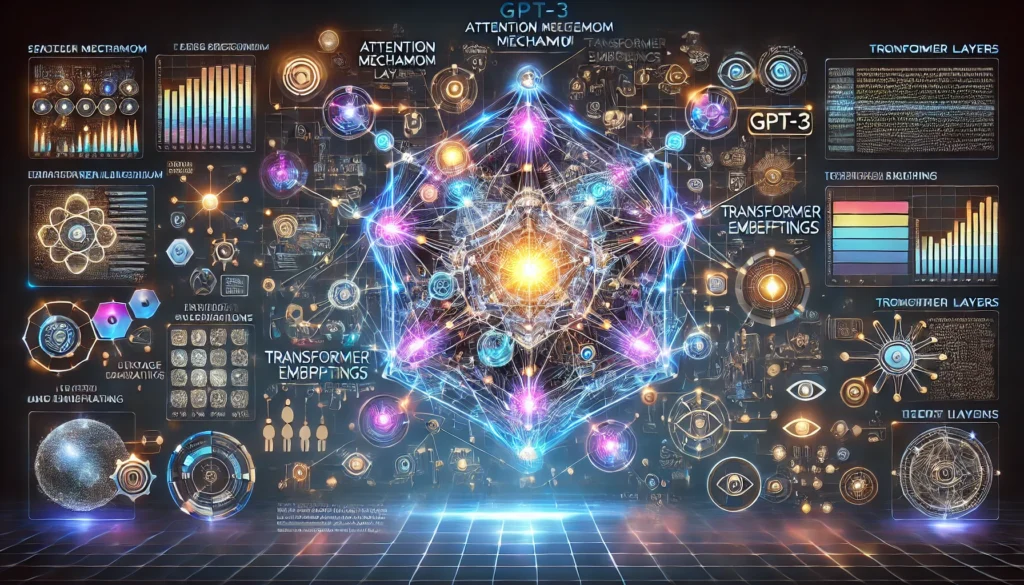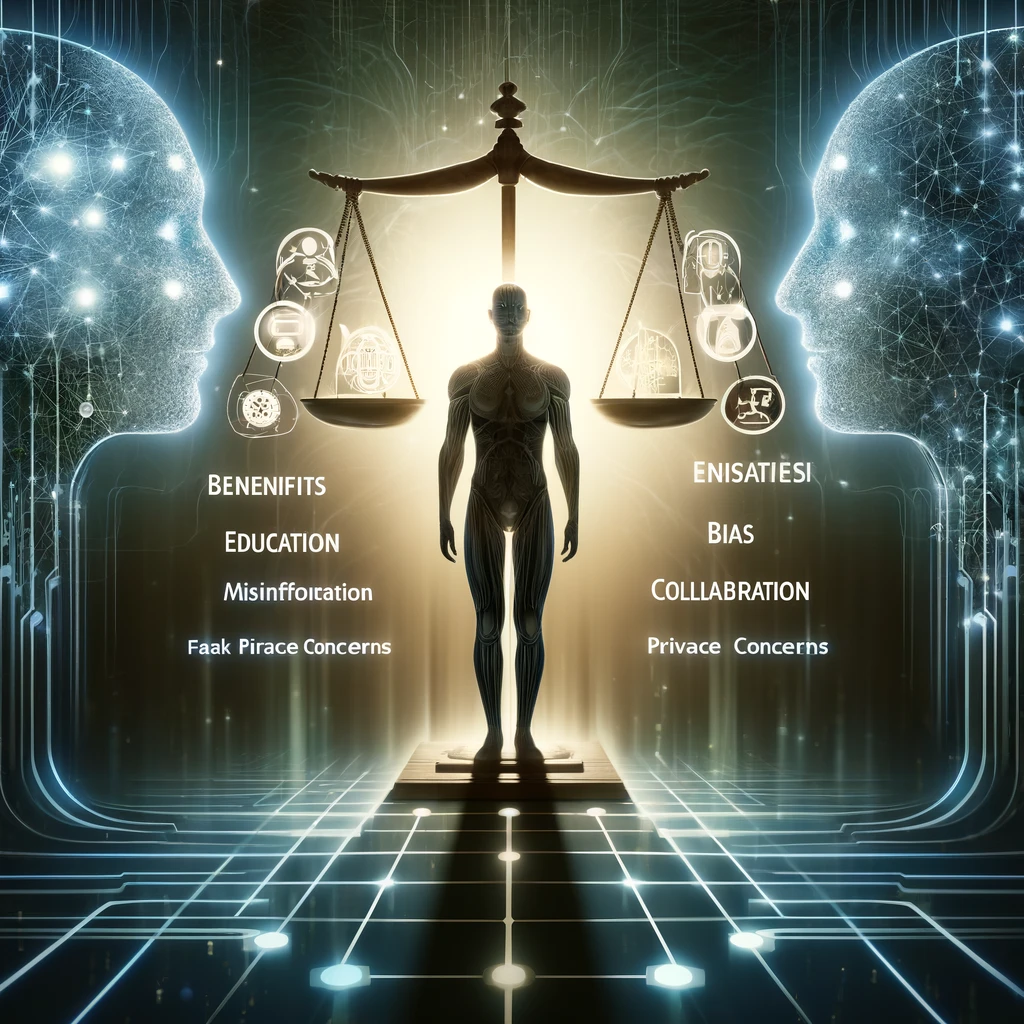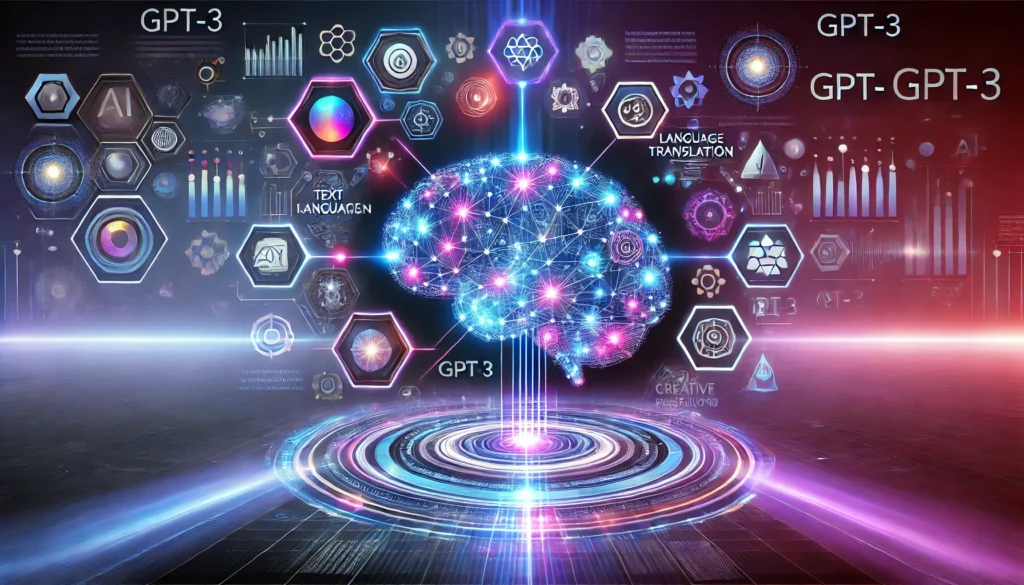What is GPT-3?
GPT-3, or Generative Pretrained Transformer 3, is one of the most advanced language models developed by OpenAI. It is capable of understanding and generating human-like text, making it a powerful tool in the world of Artificial Intelligence (AI). It can create essays, and poems, code, and even engage in meaningful conversations, all with an astounding degree of fluency.
Why is GPT-3 Special?
Unlike traditional AI models that are based on rigid programming, GPT-3 operates on a much larger scale and employs a more sophisticated approach. It has been trained on an immense amount of data, including books, articles, and websites, allowing it to comprehend a wide range of topics. This level of versatility and context understanding is what makes GPT3 stand out from previous models.
It is unique because it can “think” in a way that mimics human intelligence. But how exactly does it manage to produce such lifelike responses? Let’s dive deeper into its underlying technology.
II. How GPT-3 Works: The Technology Behind the Magic

Transformers and Deep Learning
The core technology behind GPT-3 is based on transformer architecture, a deep learning model that excels in handling sequential data, such as text. Unlike older models that process one word at a time, transformers can look at the entire sentence all at once. This ability helps them understand the full context, allowing them to generate responses that are more natural and relevant.
Training GPT-3: The Data Powerhouse
GPT3’s ability to generate human-like text comes from its training on a massive dataset of diverse textual data. From literature to online discussions, It absorbs and learns patterns in language. The model uses unsupervised learning, where it isn’t explicitly taught specific tasks but instead learns from the context of the data it processes.
The Power of Scale: Why Size Matters
One of the standout features of this AI model is its enormous size — with 175 billion parameters, it can process and generate language at an unprecedented scale. The size and scale of GPT3 are directly linked to its ability to understand and replicate human-like text. The more parameters, the better it is at capturing subtle nuances in language, making its responses more accurate and context-aware.
III. GPT-3: Thinking Like a Human

Natural Language Processing (NLP) Capabilities
GPT-3 is skilled at understanding and working with human language, thanks to its expertise in Natural Language Processing (NLP), which is a branch of AI that helps computers interact with us through language. Through its advanced NLP capabilities, It understands not just individual words but also the relationships between them. It can generate coherent responses that follow logical sequences and respond appropriately to different conversational cues.
Contextual Understanding: Responding to Minimal Input
One of GPT-3’s remarkable abilities is understanding and generating context. It can respond to prompts with minimal input, comprehending the implied meaning even when the prompt is vague. This gives it the ability to engage in nuanced conversations, much like a human would.
Creativity and Problem Solving
GPT-3 isn’t just about creating text; it’s also highly creative. Whether it’s writing poetry, generating story ideas, or solving complex coding problems, GPT3 has been shown to excel in these creative tasks. Users often find its output to be surprisingly insightful, showcasing the model’s ability to think outside the box and generate novel ideas.
Human-Like Responses
The most captivating aspect of GPT-3 is its ability to produce human-like responses. Whether you’re asking it to write an article or hold a casual conversation, It’s outputs feel surprisingly natural. Many users have reported that they were initially unsure if they were interacting with a human or a machine.
IV. Real-World Applications of GPT-3
Content Creation
GPT-3 has quickly become a go-to tool for content creators. It can generate articles, blog posts, poetry, and even full books. Its versatility has also found applications in social media content and digital marketing, where it aids in crafting engaging posts and advertisements.
Customer Support: Chatbots and Virtual Assistants
Many businesses are using GPT-3 to enhance their customer service chatbots, making interactions smoother and more efficient. These chatbots can understand customer inquiries, respond in real time, and provide solutions that feel personal and helpful, streamlining customer support operations.
Programming and Code Generation
GPT-3 can also help developers by generating code snippets or even debugging existing code. Platforms like GitHub Copilot, powered by GPT-3, assist programmers by offering code suggestions and completing repetitive tasks, ultimately speeding up development.
Personalization and Recommendations
GPT-3 is adept at offering personalized recommendations in various domains. Whether in e-commerce, entertainment, or education, it can analyze user preferences and provide tailored suggestions that feel intuitive and thoughtful.
Language Translation and Multilingual Capabilities
With its ability to process and understand text in multiple languages, GPT3 excels at language translation. It can accurately translate between various languages, making it a useful tool for global communication.
V. The Ethical Considerations of GPT-3

Bias in AI: The Dark Side of Human-Like Thinking
Despite its impressive capabilities, GPT-3 is not without its ethical challenges. Since it learns from data that may contain biases, It can sometimes generate outputs that reflect those biases. This raises concerns about its potential to reinforce harmful stereotypes or misinformation.
Accountability and Misinformation
As AI models like GPT3 are increasingly used for content generation, the risk of misinformation grows. It is essential to consider who holds responsibility for the content produced by AI, particularly when it comes to misleading or harmful information.
Privacy Concerns
GPT3 processes a significant amount of data, and with this comes the risk of privacy issues. Ensuring that GPT3 respects user privacy while generating useful content is a crucial aspect of its ethical usage.
VI. The Future of GPT-3: What’s Next?

Advancements in AI Technology
The future of GPT3 looks promising, with plans for even larger models like GPT-4 that will enhance the model’s ability to understand and generate even more accurate, human-like responses.
AI’s Role in Creativity and Decision-Making
As It evolves, its role in human creativity and decision-making is expected to grow. It will be an invaluable tool for industries ranging from entertainment to healthcare, helping professionals make informed, data-driven decisions.
Human-AI Interaction
The future of this AI model lies in seamless human-AI interaction. With more intuitive voice assistants and real-time applications, the collaboration between humans and AI will become more fluid and integrated into daily life.
VII. Conclusion
GPT-3 represents a remarkable leap in the evolution of AI. Its ability to think like a human has the potential to transform industries and improve the way we interact with technology.
As It continues to evolve, its ethical usage and potential for positive impact remain critical. With responsible deployment, GPT3 can enhance human creativity, communication, and decision-making, paving the way for a more AI-enhanced future.
FAQs About GPT-3
1. What makes GPT-3 different from other AI models?
- GPT3’s ability to understand and generate text on a massive scale, with 175 billion parameters, allows it to produce responses that feel much more human-like compared to previous AI models.
2. How does GPT-3 learn to generate text?
- GPT3 learns through unsupervised learning, processing large datasets of text from the internet and books to recognize language patterns, structure, and context.
3. Can GPT-3 be used for creative tasks?
- Yes! GPT3 is highly capable of generating creative outputs like poetry, stories, and even art. It can also assist in problem-solving and coding tasks.
4. Is GPT-3 biased?
- GPT3 can sometimes reflect biases present in the data it was trained on, leading to concerns about ethical implications and the perpetuation of stereotypes.
5. What industries benefit from GPT-3?
- GPT3 is beneficial across industries, including content creation, customer service, software development, and marketing, thanks to its natural language processing abilities.



